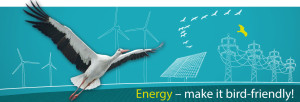
Waterfowl have once again migrated from their overwintering areas to the Finnish wetlands for their nesting season. May 9–10 marks the celebration of the World Migratory Bird Day. Because of this, The Finnish Wildlife Agency wishes to remind people of the importance of internationally coordinated hunting and up-to-date catch statistics. The theme of the World Migratory Bird Day is: taking waterfowl into consideration in the development of energy technology.
Ducks and geese enjoy a rather mobile life throughout the year. For example, a goldeneye nesting in the Finnish Lake District most likely spends the winter in the Southern Baltic Sea or at the coast of the North Sea. A northern pintail from the coastal meadows and northern wetlands, on the other hand, migrates all the way to Africa. Waterfowl are hunted along their whole flyway, but there are no international regulations that cover hunting along the entire migration route.
The first flyway management plan for a declining population of game waterbirds, the Taiga Bean Goose, is being drafted under the supervision of The Finnish Wildlife Agency. A flyway is used to denote the range of distribution of the whole species: its nesting and overwintering areas as well as its migration routes and resting places.
– The main measure is to regulate the Taiga Bean Goose hunting onto a sustainable level. The management plan is being prepared within the African-Eurasian Migratory Waterbird Agreement, and it is set to be finished in November 2015 according to two members of the task force, Mr. Mikko Alhainen and Mr. Arto Marjakangas from the Finnish Wildlife Agency.
Call for up-to-date catch data
Up-to-date catch data from a species’ entire flyway is crucial for the planning of population management.
– Europe has collected usable data on game waterfowl population sizes and development, but it lacks up-to-date catch statistics. As things stand, there are simply not enough tools to restrict the hunting of declining species. On the other hand, lack of information can also cause unnecessary restrictions regarding the hunting of other, thriving species, says Mr. Mikko Alhainen.
Mr. Alhainen continues by remarking how well waterfowl populations have been managed in North America along their whole flyway: the populations thrive and can be sustainably hunted.
– Europe, as well, should pursue the adaptive harvest management of waterfowl covering the species’ entire flyway, Senior Planning Officer Mr. Alhainen sums up.
Energy technology swallows up the waterbirds’ inhabitats
Among the factors threatening the waterbirds’ migration routes and nesting areas are energy facilities, power lines and infrastructure. The theme of this year’s World Migratory Bird Day, “Energy – Make It Bird-Friendly”, emphasizes the importance of bird-friendly energy production. The World Migratory Bird Day also highlights how production facilities based on renewable and sustainable energy sources often cause harm to waterbirds because the facilities are built on wetlands and coastal areas favoured by the species.
– Renewable energy sources, such as wind power, are increasingly popular also in Finland. The Finnish Wildlife Agency wishes to remind people that the waterbirds’ migration routes as well as the nesting and overwintering areas should be taken better into consideration in the planning of energy production, Mr. Arto Majakangas states.